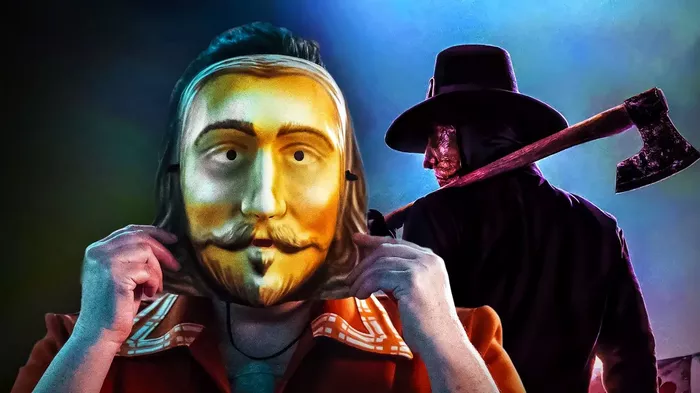In the realm of horror cinema, where the macabre meets the creative, director Eli Roth has provided a chilling glimpse into the twisted mind behind the Thanksgiving slasher film. The director recently shed light on the origin of the killer’s costume, unraveling a sinister tale that intertwines historical symbolism with the horrors of the Pilgrim era. As fans brace themselves for the unsettling narrative, Roth’s explanation adds a layer of complexity to the character of the Thanksgiving killer.
John Carver: A Historical Nod to New Plymouth’s First Governor
At the center of this gruesome tale is the slasher killer named John Carver, a deliberate nod to history that adds an eerie layer to the Thanksgiving narrative. Roth chose the name as an homage to the first governor of New Plymouth Colony, John Carver. By linking the killer to a historical figure, Roth infuses a sense of reality into the horror, blurring the lines between fiction and the unsettling truths of America’s colonial past.
Unraveling the Bizarre Pilgrim Costume: A Symbol of Darkness
The centerpiece of the Thanksgiving killer’s persona is the bizarre Pilgrim costume, a choice that may initially seem perplexing but holds a deeper, more unsettling meaning. Eli Roth explained that the intention behind this choice was to symbolize the dark history of the Pilgrims and their violent interactions with Native Americans. The Pilgrim costume, typically associated with notions of gratitude and unity during Thanksgiving, is subverted in this context to represent a more sinister narrative of bloodshed and brutality.
Pilgrim History: Unmasking the Dark Truths
Eli Roth’s decision to delve into the dark history of the Pilgrims is a deliberate move to unmask the sanitized narrative often associated with the Thanksgiving holiday. While popular culture often portrays Pilgrims as symbols of unity and gratitude, Roth uses the killer’s costume to force audiences to confront the less savory aspects of history. The juxtaposition of the seemingly innocent Pilgrim attire with the brutality of the slasher killer creates a jarring and thought-provoking experience for viewers.
The Horror of Historical Symbolism: A Genre-Bending Approach
In the horror genre, where the line between reality and fiction is often blurred, Eli Roth’s decision to incorporate historical symbolism takes the narrative of Thanksgiving into uncharted territory. By using the killer’s costume as a vessel for historical commentary, Roth pushes the boundaries of the horror genre, creating a film that not only instills fear but also invites reflection on the darker chapters of American history.
Crafting Fear Through Cultural Critique: Roth’s Directorial Vision
Eli Roth’s directorial vision goes beyond mere shock and gore; it becomes a vehicle for cultural critique. By choosing to explore the unsettling history of the Pilgrims, Roth challenges audiences to confront uncomfortable truths while experiencing the visceral thrills of a slasher film. The fusion of horror and historical commentary adds a layer of complexity to Thanksgiving, transforming it from a conventional horror flick into a genre-bending exploration of America’s past.
Controversy and Conversation: Roth Sparks Dialogue
As with any attempt to blend horror with historical themes, controversy is inevitable. Eli Roth’s Thanksgiving is no exception, as it sparks dialogue about the appropriateness of using historical trauma as a backdrop for horror entertainment. The director’s choice to create discomfort and provoke discussion speaks to the power of horror as a genre that can transcend mere entertainment, challenging societal norms and prompting audiences to question the narratives they often take for granted.
Conclusion: Thanksgiving Killer’s Costume – A Haunting Commentary
In the twisted world of Thanksgiving, Eli Roth’s explanation of the killer’s costume adds a haunting layer to the horror narrative. John Carver, the slasher killer with a namesake rooted in history, becomes a vessel for Roth’s exploration of America’s dark past. The Pilgrim costume, initially innocuous, transforms into a symbol of historical violence, challenging viewers to confront uncomfortable truths. As the Thanksgiving killer lurks in the shadows adorned in a twisted representation of Pilgrim attire, audiences are left not only with a sense of dread but also with a lingering unease about the complexities of their own history.

